Kettlebell Shoulder Stabilization Exercises for Athletes: Part 2
Kettlebell Exercises for Athletes: Heavier Isn’t Always Better
By Pamela MacElree, MS
I hope you were able to test out the arm bar and the high windmill that I went over with you in the previous post on kettlebell shoulder stabilization exercises for athletes. If you were new to these exercises, did you notice the drastic difference in the amount of weight you initially thought you might be able to do the exercise with and the weight you could comfortably control? Don’t worry! After some serious practice, you should be able to start moving up in weights.
Kettlebell Shoulder Stabilization Exercises for Athletes #3: The Turkish Get-Up
The next exercise in the series is the all-famous Turkish get-up, one of the most challenging full-body exercises. The Turkish get-up is one of the most challenging
shoulder stabilization exercises for athletes as the body moves through multiple planes of motion, requiring coordination and strength between the core and lower body.
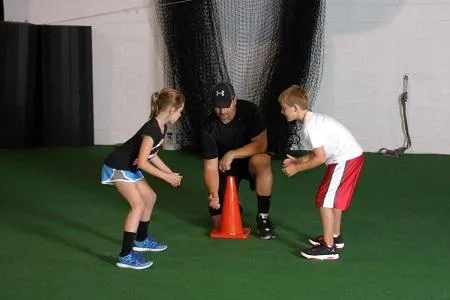
For this example, let’s assume you will be doing 1 repetition with the kettlebell in your right hand. To start the Turkish get-up, lay on your right side for the safety of your shoulder. Grip the kettlebell handle underhand with your right hand and overhand with your left, hug it close to your chest, and roll back to your back.

Once you are laying flat on your back, press the kettlebell up from the floor on one side. It is OK to use both hands to press the kettlebell if needed. Flex your right leg as well. Throughout the remainder of the exercise, your right arm should remain vertical and perpendicular to the floor.

Keeping the right shin vertical, drive through the right heel and sit up at an angle onto the elbow. Keep the kettlebell directly over the shoulder throughout the exercise.
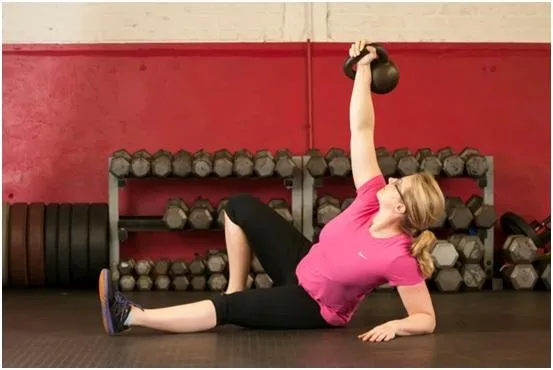
Progress to resting your weight on your left hand with a straight arm. Remember to keep the kettlebell directly over the right shoulder.
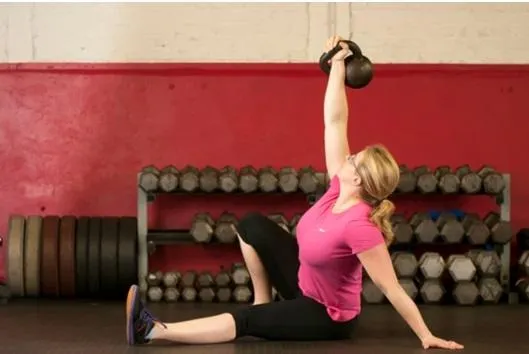
Progress to resting your weight on your left hand with a straight arm. Remember to keep the kettlebell directly over the right shoulder.
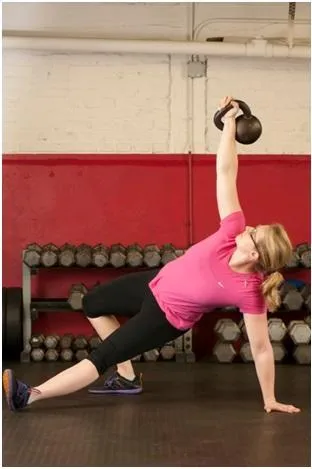
Progress to resting your weight on your left hand with a straight arm. Remember to keep the kettlebell directly over the right shoulder.
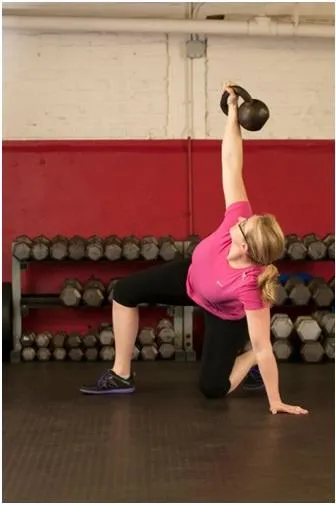
At this point, the kettlebell should sit directly over the right shoulder, the left shoulder, and the left hand, while both shoulders are active. Bring the torso to an upright kneeling position.

Position the body so that it is safe and comfortable to stand from the kneeling position. You can move the right foot and the angle of the left lower leg to be able to stand up with good mechanics.

Once you reach the standing position, you have completed half of the exercise. Now, reverse each step. You can watch the video to see the reverse part of the Turkish get-up.
Just as with the arm bar and the high windmill, it is extremely important to keep the arm that is holding the kettlebell vertical and perpendicular to the floor as the body moves underneath it.
There are several ways to do the Turkish get-up, and while all are valid, each must be executed with proper form in order to be both safe and effective. The above explanation is just one variation.
Kettlebell Shoulder Stabilization Exercises for Athletes #4:
The Gladiator Press
Our last in the series of kettlebell shoulder stabilization exercises for athletes
is the gladiator press. You’ll notice in the video and in the photos that the gladiator press starts out very similarly to both the arm bar and the Turkish get-up; in fact, the gladiator press can be done as part of a Turkish get-up.

In the gladiator press, you will perform all of the steps of the Turkish get up exactly as listed above until you get to the hip bridge position. Once you get to the hip bridge position, you will shift your bodyweight to be on the straight leg.

Take your time here. Be sure the left hand is sitting directly under the left shoulder to support your torso and the weight of the kettlebell overhead. Gradually move the right (top) leg to rest directly on top of the left (bottom) leg.
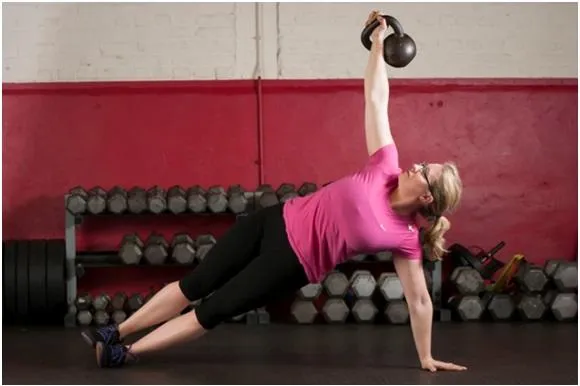
From here, if you can maintain the position, slowly lift the top leg into the air.

Once you have reached this position, you can return to the starting point by simply reversing the steps to get here. You can also return the top leg to the floor to create the hip bridge position and continue on with the Turkish get-up.
For all four of these exercises, it is recommended to start out with a slightly lighter weight or even bodyweight to get comfortable with the complexity of the movement as well as to determine if you have any imbalances in shoulder stabilization from one side to the other.
Keep the repetitions low on these kettlebell exercises for athletes and place them in the beginning of workouts when the mind and body are both fresh. As you progress to heavier weights, it is always safe to use a spotter.
Want to learn more about training with kettlebells?
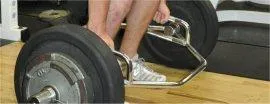
High School Strength Coach Certification
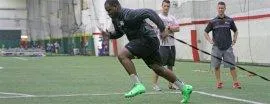
Certified Speed & Agility Specialist
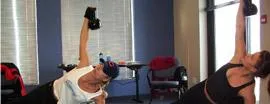
Kettlebell Instructor Course
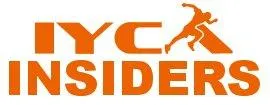
IYCA Insiders - Exclusive Access
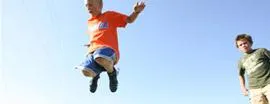
Youth Fitness Specialist Certification
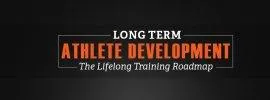
Long Term Athlete Development

Youth Nutrition Specialist Certification

Copyright © 2008 - 2025 International Youth Coaching Association. All Rights Reserved
|
|

